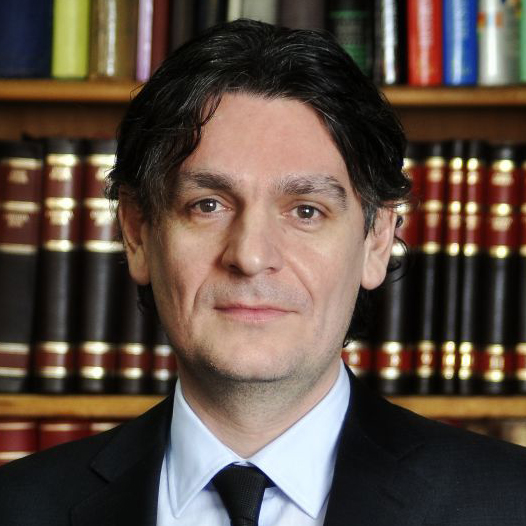 Kindly show the way to the one who has gone astray (Latin proverb)
Kindly show the way to the one who has gone astray (Latin proverb)
In the last 25 years, constant dynamic transformations happening in Serbia have helped to create an environment where the need for channelling development processes became an intractable and seemingly elusive task. Pondering over the depth of systemic changes of the whole society during that period, one cannot avoid feeling overwhelmed by history, unable to reckon (let alone understand) the myriad events that occurred over a very short period of time on this small territory. Each of those events left physical traces on Serbian landscape, villages and urban spaces. Until 2006 the land in Serbian cities and towns was in state ownership. Even today, the town-centres are still full of nationalized building plots and properties with an unclear perspective for legal resolutions for ongoing disputes over their ownership. Nevertheless, illegal and unlicensed construction activities that were booming in the 90s are now being gradually eliminated. Moreover, political pluralism has been established and the interests of private investors have been introduced into the processes of planning and construction. The market has been liberalised and now, legitimately, seeks regulatory changes.
Does Serbia require a clearly defined and precisely planned development framework in these circumstances? Would that be an inhibitor or a driver of change? How can one integrate 130(!) strategies and action plans adopted (or in the stage of preparation) on the national level into a single document? Furthermore, how can one fit into that single document hundreds of similar papers accepted on local and regional levels? Strategy or plan? Flexible or rigid behaviour in the urban space? What is the difference between a plan and a strategy actually? Too many questions, but too few simple answers. In many cases, the situation is extremely ambivalent. On the one hand, the multitude of strategic documents can lead us to a conclusion that there are simply too many strategies in Serbia. On the other, it highlights Serbia's uneven territorial progress with some regions having close to no development guidelines except for those adopted on the national level. Going a step further, the whole project would entail coordination, synchronisation, and codification of the documents as well as making a decision on their hierarchy, the extant of mandatory application and the mode of adoption.
Spatial and urban plans are legal acts. In order for a spatial plan to be adopted as a law in Serbia, it must pass a complex procedure, opened to criticism. However, formulation of a development strategy for each specified territory plays the key role in any planning process. Strategic planning involves organizing events and proposing policies which would enable protection, management and development of capacities and potentials of the given area. Having that in mind, Bryson and Roering (Brayson and Roering, 1996) write that strategic planning is composed of concepts, procedures and tools, which must be adapted to each specific situation in order to attain the desired goal. In other words, the process of creating a development strategy for a certain territory requires drawing out a list of actions which need to be undertaken in the future using certain resources and levers of governance. This list should be based on foregoing analysis of basic determinants, i.e. problems, opportunities and limits. When designing a strategy, it is crucial for spatial, economic, social and environmental aspects to be treated equally. Furthermore, an important part should be given to the specific legal and institutional framework, which would emphasize the need for regional and local authorities to accept greater responsibility for overall progress of their community. The planning process itself represents a series of compromises beneficial to the development of an entire society. Likewise, strategy should endeavour to balance different interests on the given territory. Spatial and urban planning projects have a dominant role in this process. Apart from the fact that each development idea is directly reflected onto the space which represents the subject and the object of its realization, the importance of planning becomes clear in its synthetic character and the ability to integrate different aspects of life and assess their effect on the physical environment.
What could be thus recommended to Serbia? One of the pillars of strategic planning can be found in Sun Tzu's work The Art of War, where he accentuates four basic elements that can be also recognized in today's practices:
1. accurate and realistic assessment of the situation on the ground (urban space)
2. definition of realistic goals
3. understanding of one's own potentials and capabilities and acting accordingly
4. persistence in achieving delineated goals
In this context, strategic planning is nothing more than an effort to achieve a desired objective imposed by a specific community using a series of synchronized actions, while respecting territorial, natural, economic and social borders (UN HABITAT, 2006.). Therefore, for Serbia's further development and inclusion in the regional and international environment it is vital to design an integral development strategy as well as a spatial plan! The first document would provide a framework and determine the general direction for development, whilst the Spatial Plan of the Republic of Serbia would encompass concrete solutions, allocation of public interests, specification of strategic priorities, and obligatory implementation for government officials, investors as well as the citizens. Capital projects would be perceived in a wider context, without improvisation, voluntarism and subjectivity. Hence, they would reflect the broad needs, professional (scientific) evaluations, clear classification in accordance with their importance, and, moreover, they would be accepted by broad consensus with a sense of belonging to the general public.
Prof. Dr. Velimir Šećerov,
Faculty of Geography, University of Belgrade

 Author:
Author:





